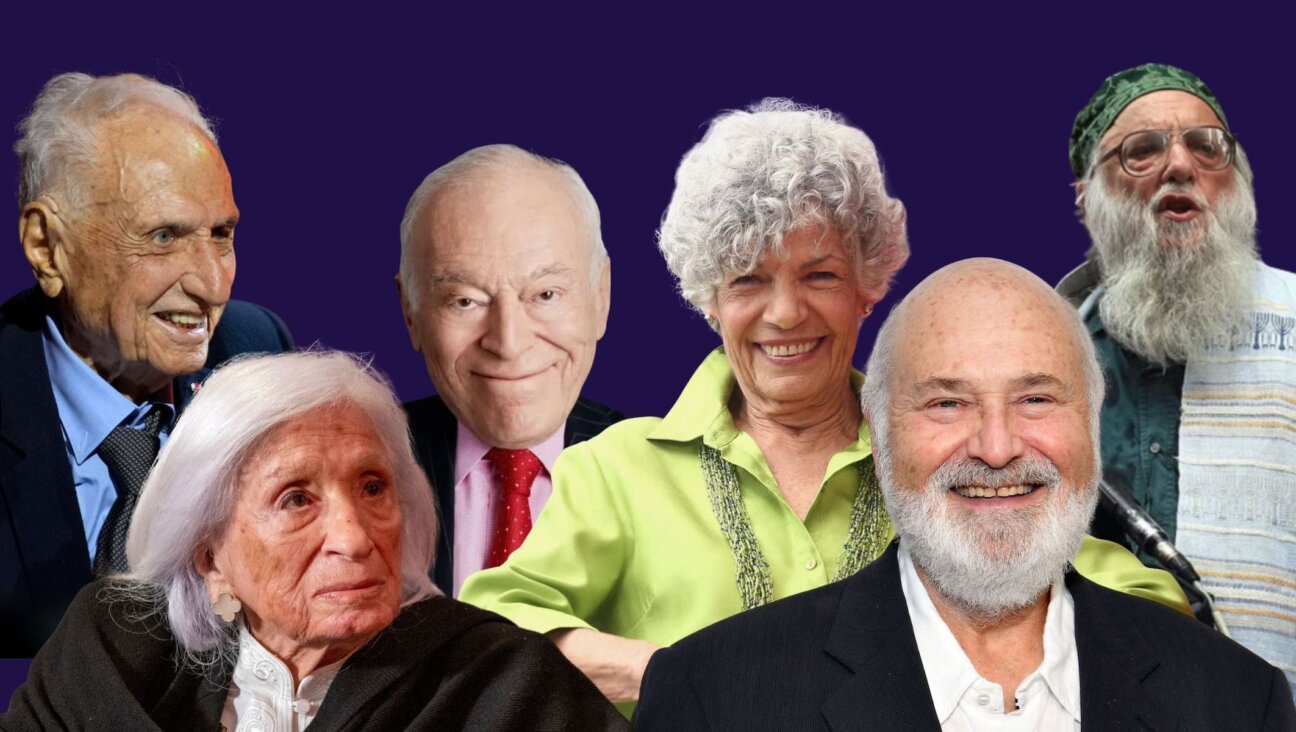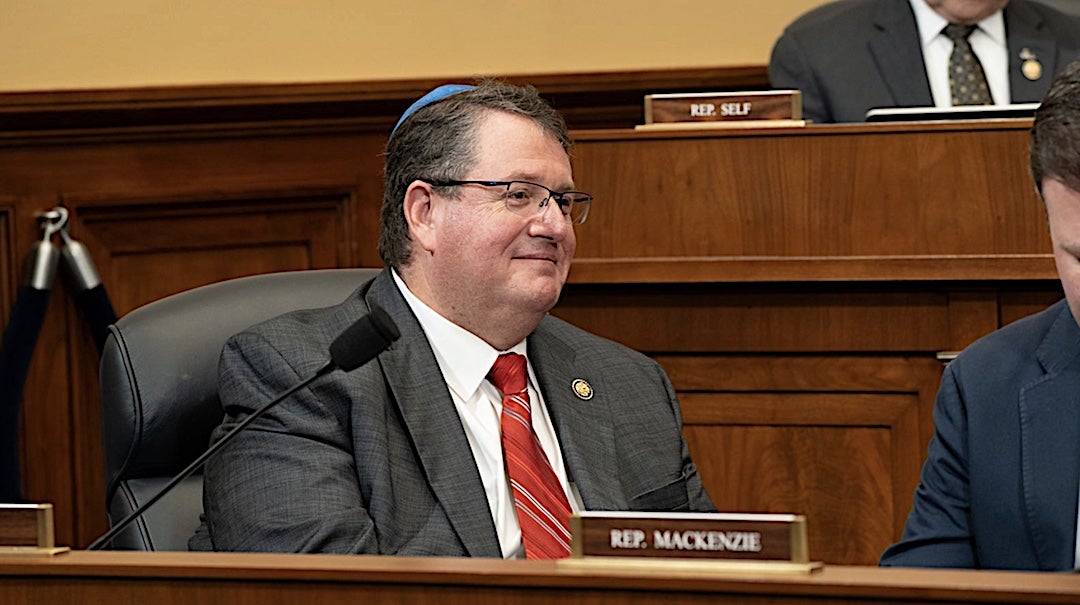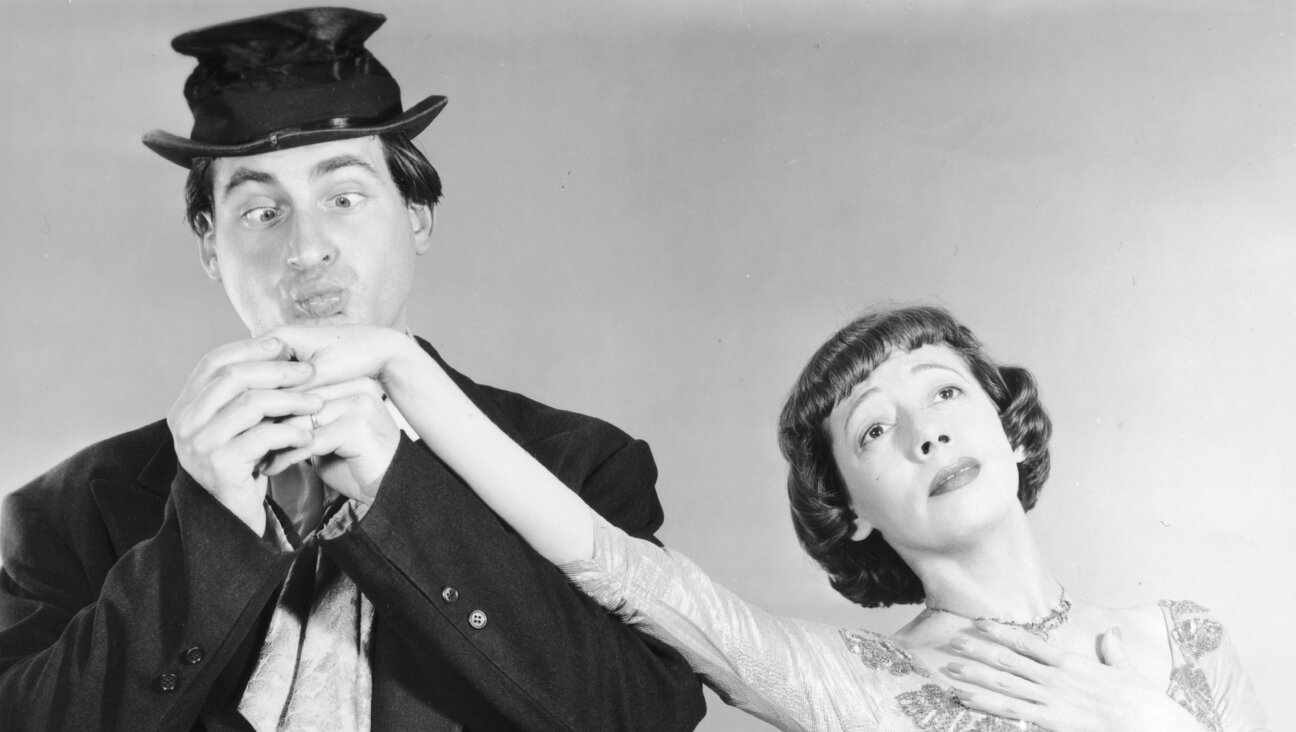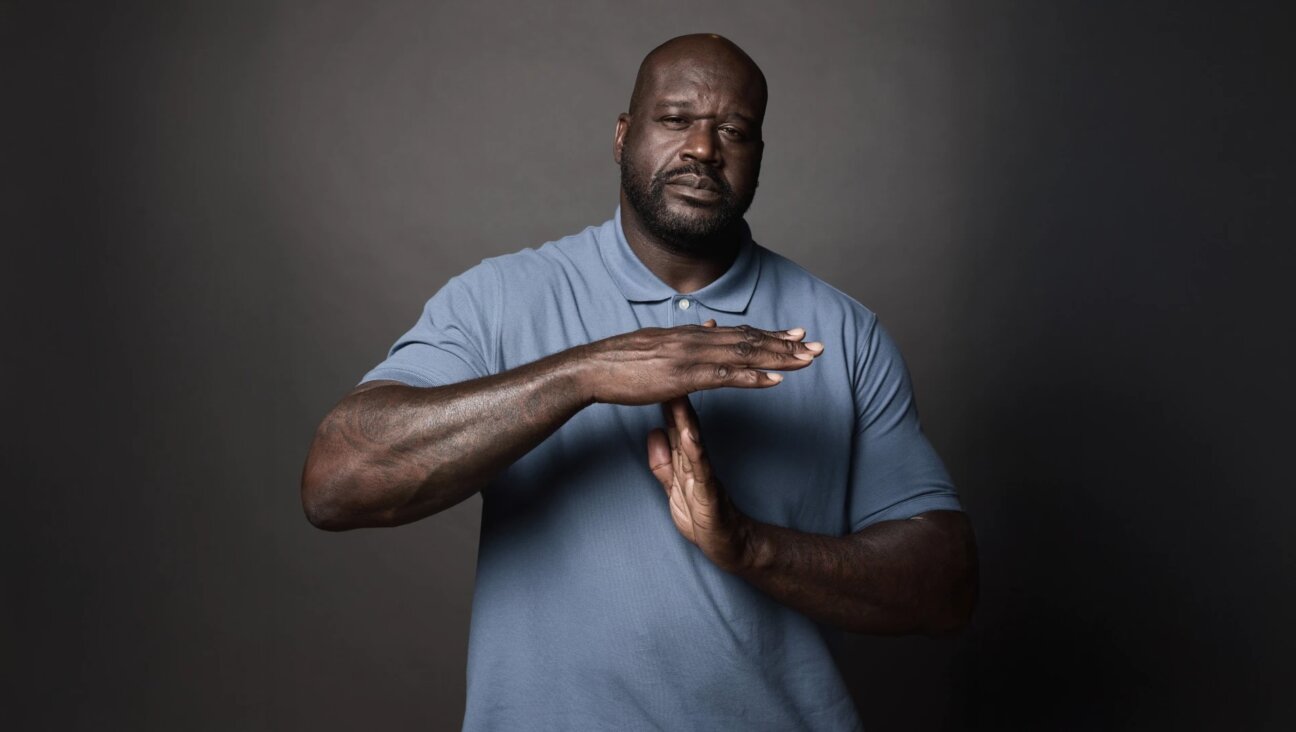Tom Lehrer, satirist who sang about ‘Hanukkah in Santa Monica,’ dies at 97
The song, commissioned by Garrison Keillor in 1990, was one of the first popular tunes about a Jewish holiday
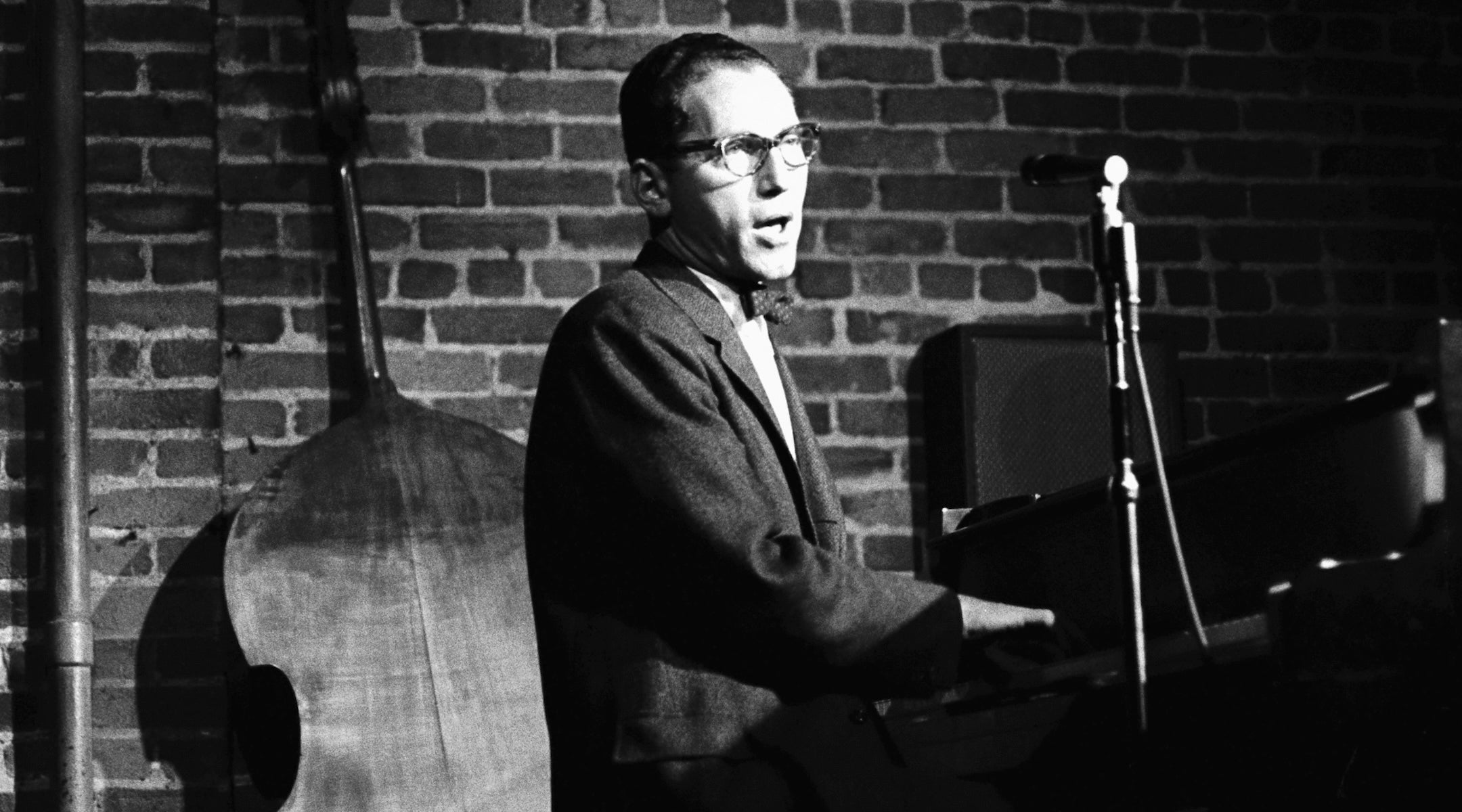
Tom Lehrer sings and plays piano at the Hungry I Nightclub in San Francisco. Photo by Ted Streshinsky/Corbis via Getty Images
(JTA) — Tom Lehrer never identified closely with his ancestral Judaism. But the famed satirist and mathematician, who died Saturday at 97, wrote one of the first popular songs about the Jewish holiday.
“(I’m Spending) Hanukkah in Santa Monica” debuted in 1990, well after Lehrer’s peak as a performer, on a come-from-retirement performance on Garrison Keillor’s radio show.
Keillor commissioned the new song from Lehrer because, he observed, Jews had written many popular Christmas songs but none for their own holidays.
“There was thus a deplorable lacuna in the repertoire, which this song, a sort of answer to ‘White Christmas.’ was intended to remedy,” Lehrer said on air.
The resulting song — which also mentions spending “Shavuos in East St. Louis,” “Rosh Hashanah in Arizona” and “Yom Kippur in Mississippi” (try saying it out loud with a Southern accent) — has grown more popular in recent years. The writer Sarah Weinman attributed its rise to the New York City nightclub impresario Michael Feinstein, whom she said had turned the gossip columnist Liz Smith, composer Marvin Hamlisch and writer Nora Ephron on to the song.
Notable recent covers have included an arrangement by the Gay Men’s Chorus of Los Angeles, a jazzy version by the singer Deborah Silver, and a Yiddish rendition that spells the title “Khanike in Santa Monica.”
The song was a departure for Lehrer, who was born in Manhattan in 1928 and grew up in a secular Jewish family. He rarely spoke about his personal life, but in the liner notes of a compendium album released in 2000, he addressed his family’s relationship to Judaism.
“More to do with the delicatessen than the synagogue. My brother and I went to Sunday School, but we had Christmas trees, and ‘God’ was primarily an expletive, usually preceded by ‘oh’ or ‘my’ or both,” he said.
Lehrer enrolled at Harvard University at 15, where he studied math before joining the U.S. Army and then returning to Cambridge for a graduate degree. He gained renown locally for his parodies, which often took aim at divisive political issues and pushed the boundaries of propriety. His first album, which he paid to record in 1953 and sold at his performances, became a cult hit that ultimately propelled him to multiple world tours, a shoutout by England’s Princess Margaret and, in 1965, a spot in the Billboard Top 20 for his album “That Was The Week That Was” (it peaked at No. 18).
Lehrer retired from touring in 1967 but continued to write songs for TV shows and dabble in musical theater intermittently for some time. But he spent the bulk of his time in the classroom, teaching math and, at one point, musical theater, at Harvard, the Massachusetts Institute of Technology and the University of California, Santa Cruz.
Famously private, Lehrer never married or had children. He died at his home in Cambridge, which he kept while dividing his time between the coasts.
While “(I’m Spending) Hanukkah in Santa Monica” was the Lehrer song that put Judaism in the title, at least one other famous song contained Jewish content as well. The 1965 song “National Brotherhood Week,” which pilloried an event promoting togetherness at a time of rising tension over race, drew laughs when he got to the verse about religion.
“Oh, the Protestants hate the Catholics, And the Catholics hate the Protestants,” he sang. “And the Hindus hate the Moslems, And everybody hates the Jews.”

